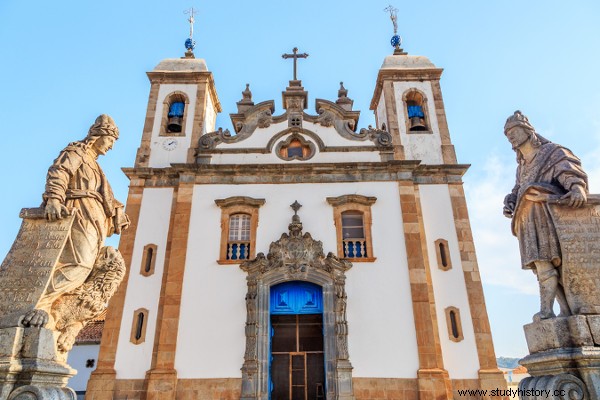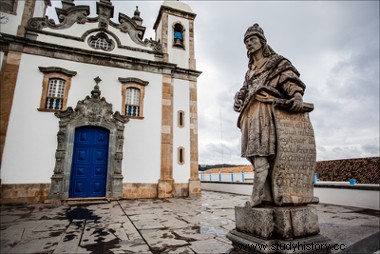
By Me. Cláudio Fernandes
In his book of poems O Romanceiro da Inconfidência , dedicated to the history of Minas Gerais at the time of the Colonization until the Confidence, Cecília Meireles wrote the following lines:
“ […] Cavalhadas, Luminárias.
Bells, processions, promises.
Angels and Saints Rising
in the hands of gangrene and leprosy
Fine songs broslando
the chapel implements.
All baroque dreams
sliding on stone. [...]”
Romance XXI or Ideas. In:Meireles, Cecilia. Romance of Inconfidence .
In these verses, the highlighted passage “Angels and saints being born/ in the hands of gangrene and leprosy” refers to the sculptor Aleijadinho . Cecília Meireles mentioned the type of image that was typically sculpted by this artist, “angels and saints”, as well as the physical characteristic that earned her the nickname referred to:the “hands of gangrene and leprosy”.
Aleijadinho's real name was Antônio Francisco Lisboa , born in Ouro Preto-MG, on August 29, 1738, and died in the same city, in 1814. Aleijadinho was the illegitimate son (bastard) of a talented Portuguese architect, called Manoel Francisco Lisboa, with an African slave. As his father was an eminent Portuguese, Aleijadinho was not born as a slave and, throughout his childhood and youth, he managed to attend a very reasonable education by the standards of the time.
Much of Aleijadinho's artistic training was given to him by his architect father. In addition, he learned much of his sculpting techniques from his uncle, Antônio Francisco Pombal, who was a woodcarver. In addition to his artistic training, Aleijadinho lived the atmosphere of liberal ideas that spread in Minas Gerais in the 18th century and that set the tone for Inconfidência.
In 1777, when he was 39 years old, Aleijadinho was victimized by the disease that deformed him. It is speculated to this day whether this disease was syphilis or yaws (also known as tropic yaws), or even deforming rheumatism or leprosy (as suggested in the poem by Cecília Meireles). What is certain is the disease that affected his feet, hands and other regions of the body and that, in addition to the atrophy, also filled him with wounds and pus.
Even attacked by this illness, Aleijadinho managed to continue his work as a sculptor and architect of great importance, whose importance is recognized by the main art critics of the world. Aleijadinho's style was inserted in the baroque , especially in the Brazilian Baroque whose main artistic expression was poetry, architecture and sculpture.
Among the various images he sculpted, almost all related to religious themes, the most impressive is the set of statues known as the Course of the Prophets , located in the Church of Bom Jesus de Matosinhos , in Congonhas, Minas Gerais. In total there are 12 statues representing the twelve Jewish prophets, from Isaiah to Habakkuk and Nahum, all carved in soapstone.

One of the prophets carved by Aleijadinho in soapstone
Aleijadinho also had the help of slaves that he himself bought, who adapted the sculpting instruments to his hands. It is said that, at times, the artist's irritation led him to the beating of his slaves and other forms of mistreatment. The sculptor died as his illness worsened, which in the final years of his life left him almost blind and practically unable to move.
*Image credits:Shutterstock and T photography
